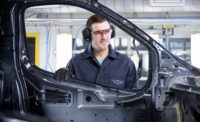For decades, the science and practice of safety has been based on incident-based approaches based on manual processes. Today, even the most digitally advanced companies are still basing their safety processes on data from events that have already occurred. As a result, action is often taken too late, older data is being used to make important safety decisions, and a significant amount of money and effort is wasted when it comes to training and management.
Let’s face the facts: safety program investments have plateaued in terms of ROI, and improvements are no longer resulting in an associated reduction of incidents.
It’s almost as though in our rush to digitize, we’ve forgotten the importance of the human factor. As “things” become more engaged and connected with one another on the factory floor, individual workers often remain unengaged in their own safety despite the best efforts of safety managers, operations personnel and executives.
It’s a shame that workplace safety practices have been slow to embrace digital transformation, because connected technologies like IoT (Internet of things) and AI (artificial intelligence) represent areas of massive gains in both reducing incidents and improving productivity. There is good news, though. Unlike other aspects of operations, connected safety strategies represent some of the fastest times to implement, the lowest risk, and the highest return on investment. It just needs the right approach, and the right commitment from the executive office all the way to the factory floor.
Worker-driven safety
Safety product manufacturers have made huge strides in smart technologies for PPE and most companies have invested significant time integrating sensors into their work environments. These are all great improvements, but they’re missing the integration of the most important asset of all – their workforce. Traditional, top-down safety programs have to be transformed to create collaborative communities of safety that leverage data from the many devices and equipment already in place. The only way safety programs achieve stronger results is by using IoT technology to actually connect workers to an overall safety program in much the same way that it connects devices like PPE and sensors. Once workers are engaged in reporting real-time safety data, the results are extraordinary.
Real-time communication
The idea of connecting workers goes beyond just transmitting data via sensors and PPE to a safety manager’s dashboard. That’s merely the continuation of the traditional, top-down approach that leaves engagement in the training classroom, or at the daily safety meeting.
Devices worn and operated by workers should give them the information and the technology to communicate with their peers in a real-time manner, not just transmit data to an enterprise system. The ability of team members to receive and act on data that is current has dramatic impacts on preventing injuries, and reducing the financial and reputational impacts accidents can have on an organization.
These types of safety programs have been implemented in the real world, so it’s not just a theory. During pilot projects, workers are handed devices that give them the ability to report on potential risks in a real-time fashion. The response from workers has been positive. Millennial workers, being true digital natives, were expected to respond enthusiastically, but older workers have embraced the concept of connected safety as well.
Workers feel engaged & empowered
Traditional, manual safety processes are often viewed as just another “thing to do.” When workers are deployed with smart and connected technology, they are enthusiastic about being part of a safety ecosystem in which data is communicated in real-time with their peers, their supervisors and the safety department. Their behavior change is immediate, dramatic and positive. When workers own the processes that keep them safe, whether it’s simple awareness, risk identification, or real-time reporting of actual unsafe conditions, they feel engaged and empowered to improve safety as part of a connected community.
Innovation can drive maximum engagement in a safety community where each worker, regardless of title, has the opportunity to influence real time improvements in safety performance.
Data-driven safety
Once workers have been empowered with connected devices, and trained on the correct processes for reporting safety-related information, that real-time data becomes a powerful force in the connected safety strategy.
Contextual, rich data can help safety managers, operations staff and executives make better decisions regarding workplace risks based on what’s happening now. As a result, safety practices evolve as needed and injuries can be predicted and subsequently prevented based on strong data management and predictive analytics techniques. Rather than reacting to old, possibly invalid data, safety managers are connected to the entire operation on a real-time, 24/7 basis.
Many other aspects of manufacturing and industry have already incorporated strong data analysis practices into their daily operation. Fortunately, technology has advanced to help safety managers streamline the flow of data into information that is customized and easy to absorb. Much like how data is manipulated and analyzed within complex operational or marketing platforms, safety data from connected devices can be compiled, reported and updated in a way that’s easy to understand and easy to implement. Although the technology is robust, the implementation of a connected safety platform should not be complicated.
One step at a time
Frankly, the idea of a closed safety platform is simply unrealistic. Although larger manufacturers envision safety ecosystems built and operating on a single-brand philosophy, manufacturing, construction, and other industrial environments have always required a wide variety of PPE, technologies, and equipment solutions. An open platform that can connect to any device is the only realistic option and fortunately, that’s readily available using IoT and other open-based technologies.
Just like any area faced with the need for digital transformation, connected safety needs to be adopted incrementally. Creating a pilot mentality, and beginning with high-risk areas can result in a low- risk, high-return digital implementation. The idea of created a connected safety strategy for an entire factory is overwhelming. Testing the strategy in an area where safety risks are at a maximum can deliver immediate rewards in very little time.
Where safety is concerned, strategy doesn’t originate with data. The real power comes from engaged workers using connected devices as part of a real-time safety ecosystem. This requires both an end goal and the basis for planning. It isn’t hard to imagine how much more engaged someone feels when they’re reporting a risk that might do actual harm to their co-worker --right now.









